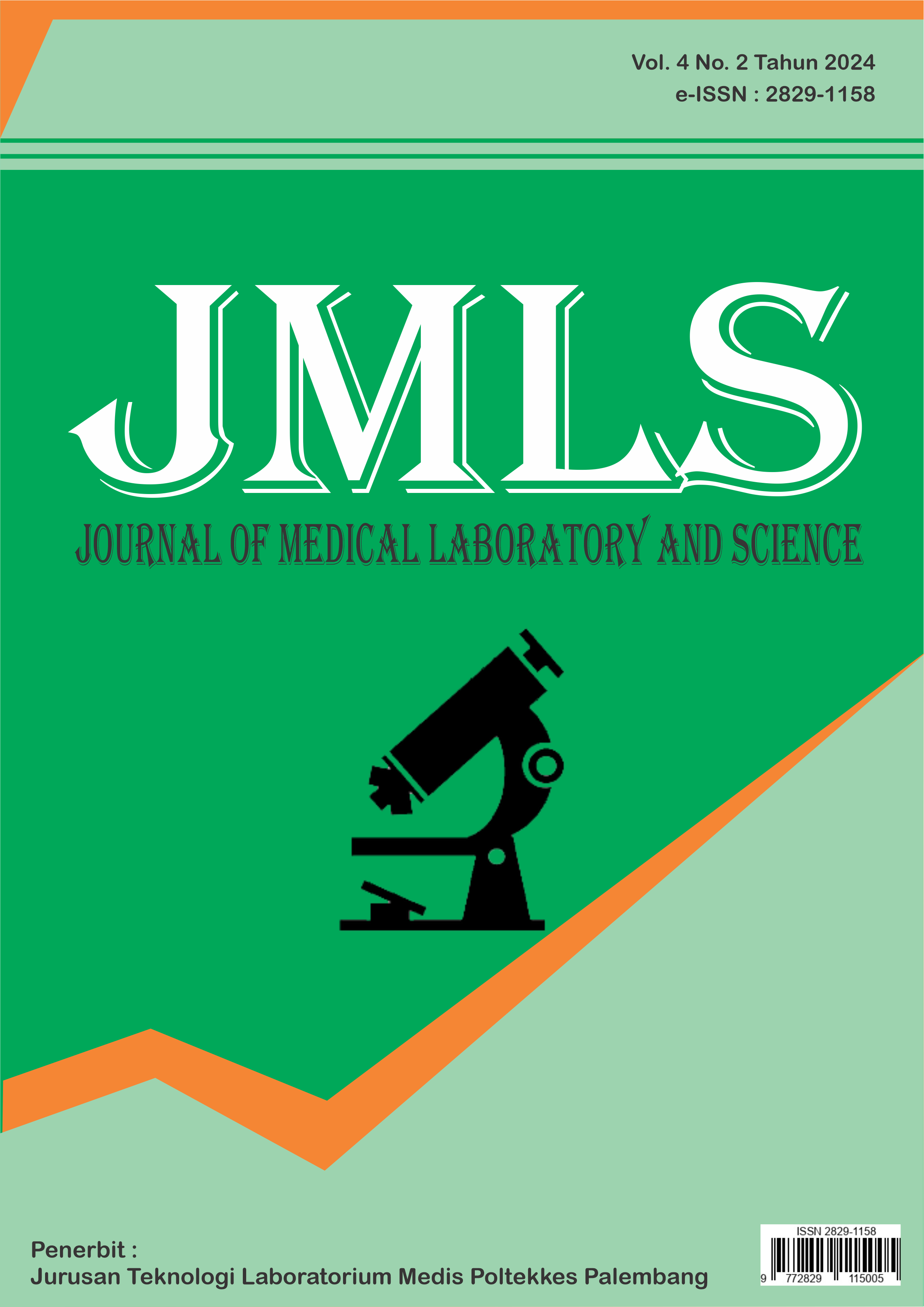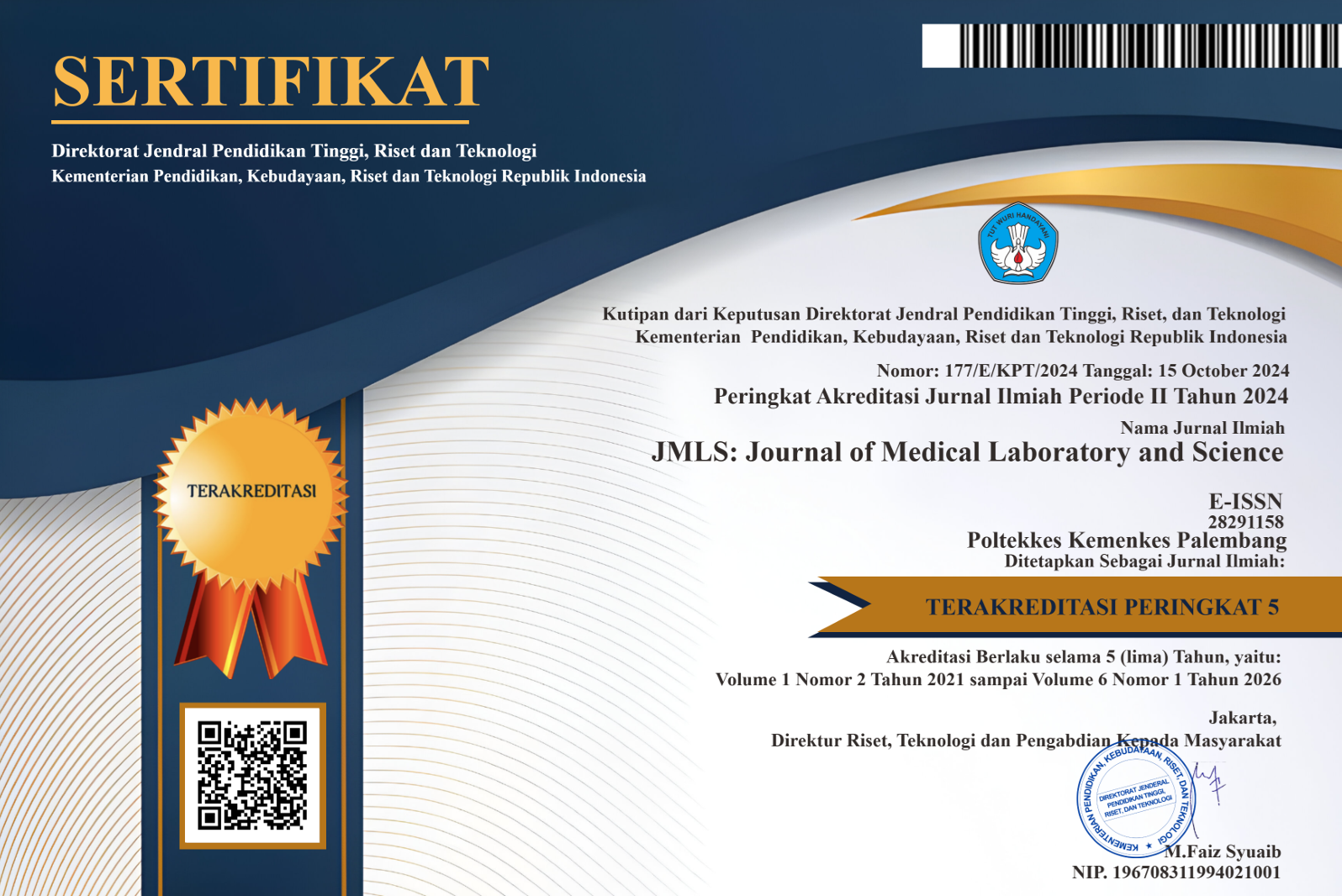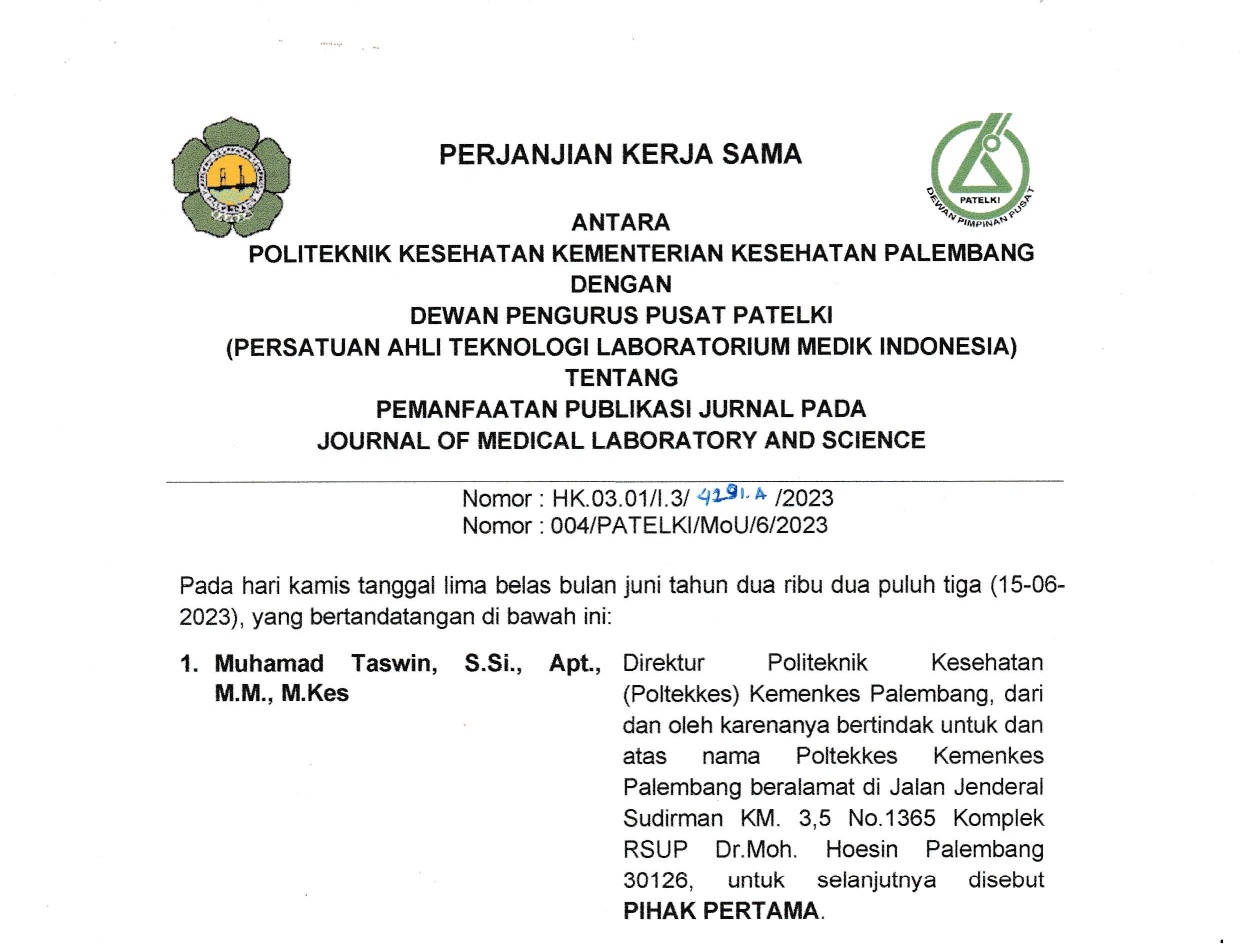POLA KUMAN DAN FAKTOR RISIKO KEJADIAN RESISTENSI PADA PASIEN INFEKSI SALURAN KEMIH
GERM PATTERNS AND RISK FACTORS FOR RESISTANCE IN URINARY TRACT INFECTION PATIENTS
Abstract
Background: Urinary tract infections are still a health problem because the morbidity and mortality rates are still quite high. Urinary tract infections (UTIs) are the second most common infectious disease after respiratory infections. UTI can also occur in all ages, from children to adults. UTI can be caused by gram-negative or gram-positive bacteria as well as fungi. This research aims to identify the germs that cause UTI and find out which types of antibiotics are sensitive and resistant through examining urine cultures of UTI sufferers and to find out the factors that cause resistance. Method: This research design is analytical descriptive. The research was conducted in the Bacteriology laboratory, medical laboratory technology department, Health Polytechnic, Ministry of Health, Jambi. Results: Based on gender, there were 20 male respondents (33%) while there were more female respondents, namely 40 (67%). The age range of respondents was 1 to 67 years with an average of 19 years, with the highest number of UTI cases aged 1-15 years, namely 63%. The most common germ pattern that causes UTI is E. Coli bacteria 29 (48%) followed by Staphylococcus epidermidis bacteria 18%. Of the bacterial forms, 28% are cocci and 72% are rods. Conclusion: The germ pattern that causes urinary tract infections is caused by 9 species of bacteria, the most common being E. Coli bacteria at 48% and the second being Staphylococcus epidermidis (18%). UTIs often occur in women and based on age, most occur in children 1-15 years.
Copyright (c) 2024 Journal of Medical Laboratory and Science

This work is licensed under a Creative Commons Attribution-ShareAlike 4.0 International License.
Authors who publish with this journal agree to the following terms:
- Authors retain copyright and grant the journal right of first publication with the work simultaneously licensed under a Creative Commons Attribution License that allows others to share the work with an acknowledgement of the work's authorship and initial publication in this journal.
- Authors are able to enter into separate, additional contractual arrangements for the non-exclusive distribution of the journal's published version of the work (e.g., post it to an institutional repository or publish it in a book), with an acknowledgement of its initial publication in this journal.
- Authors are permitted and encouraged to post their work online (e.g., in institutional repositories or on their website) prior to and during the submission process, as it can lead to productive exchanges, as well as earlier and greater citation of published work














